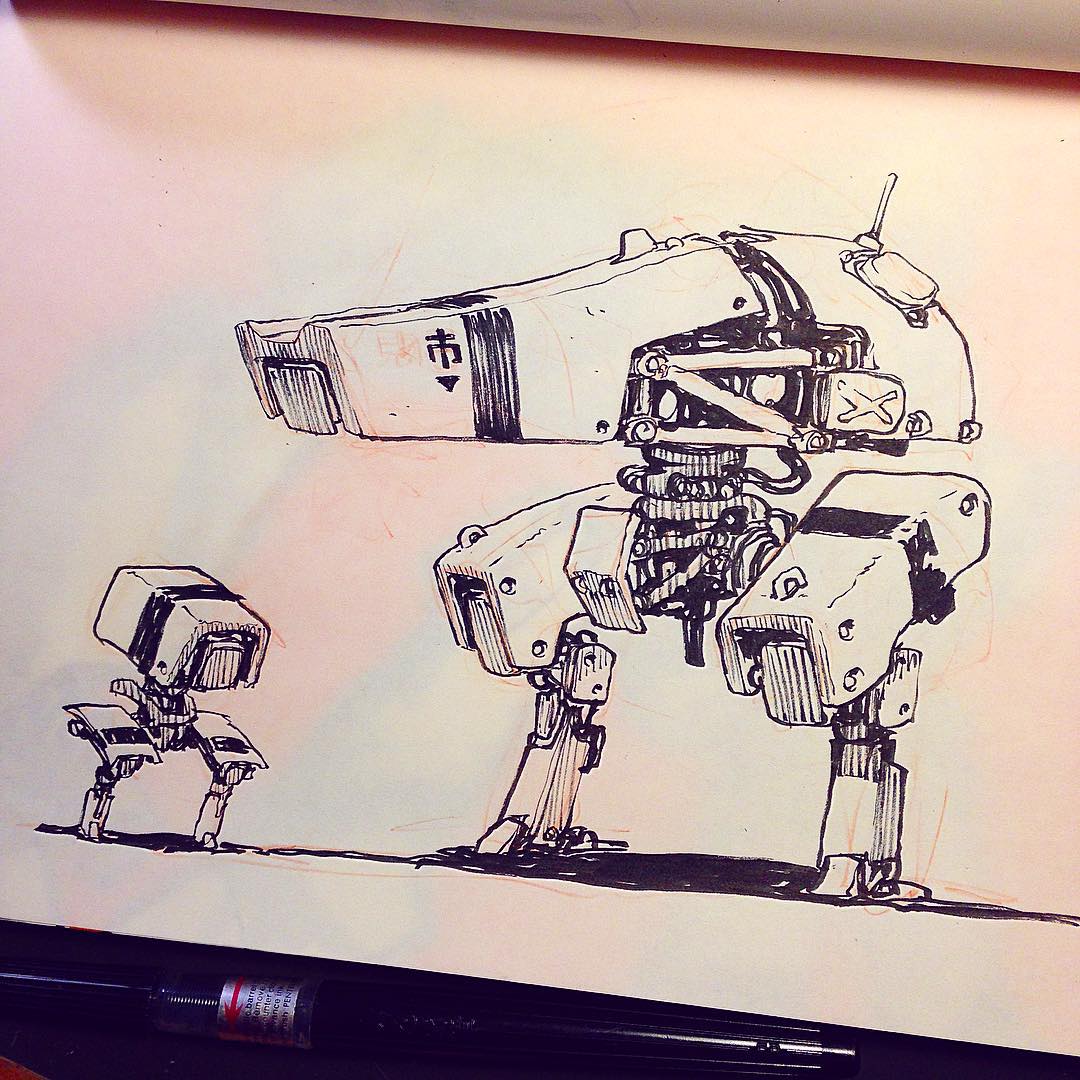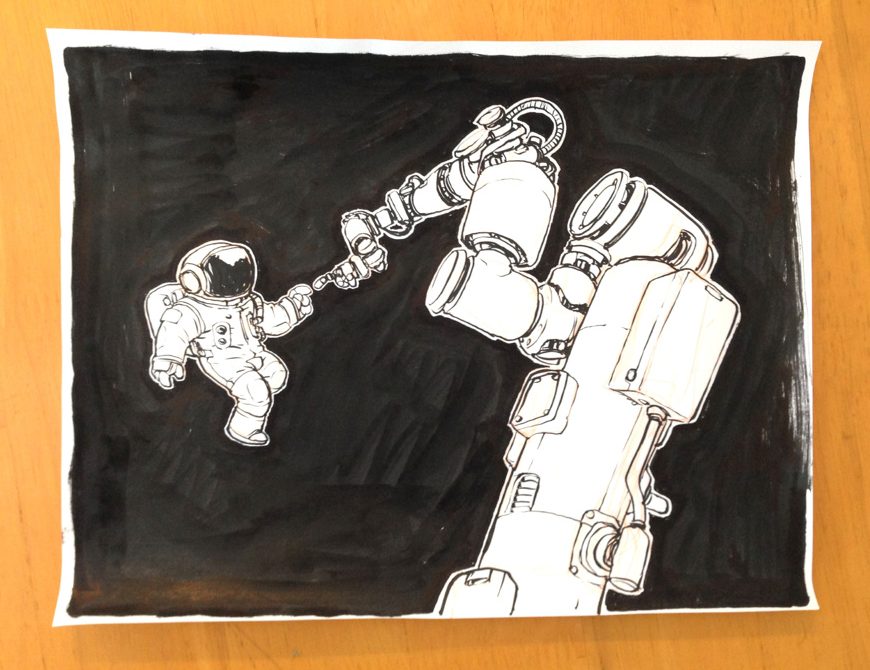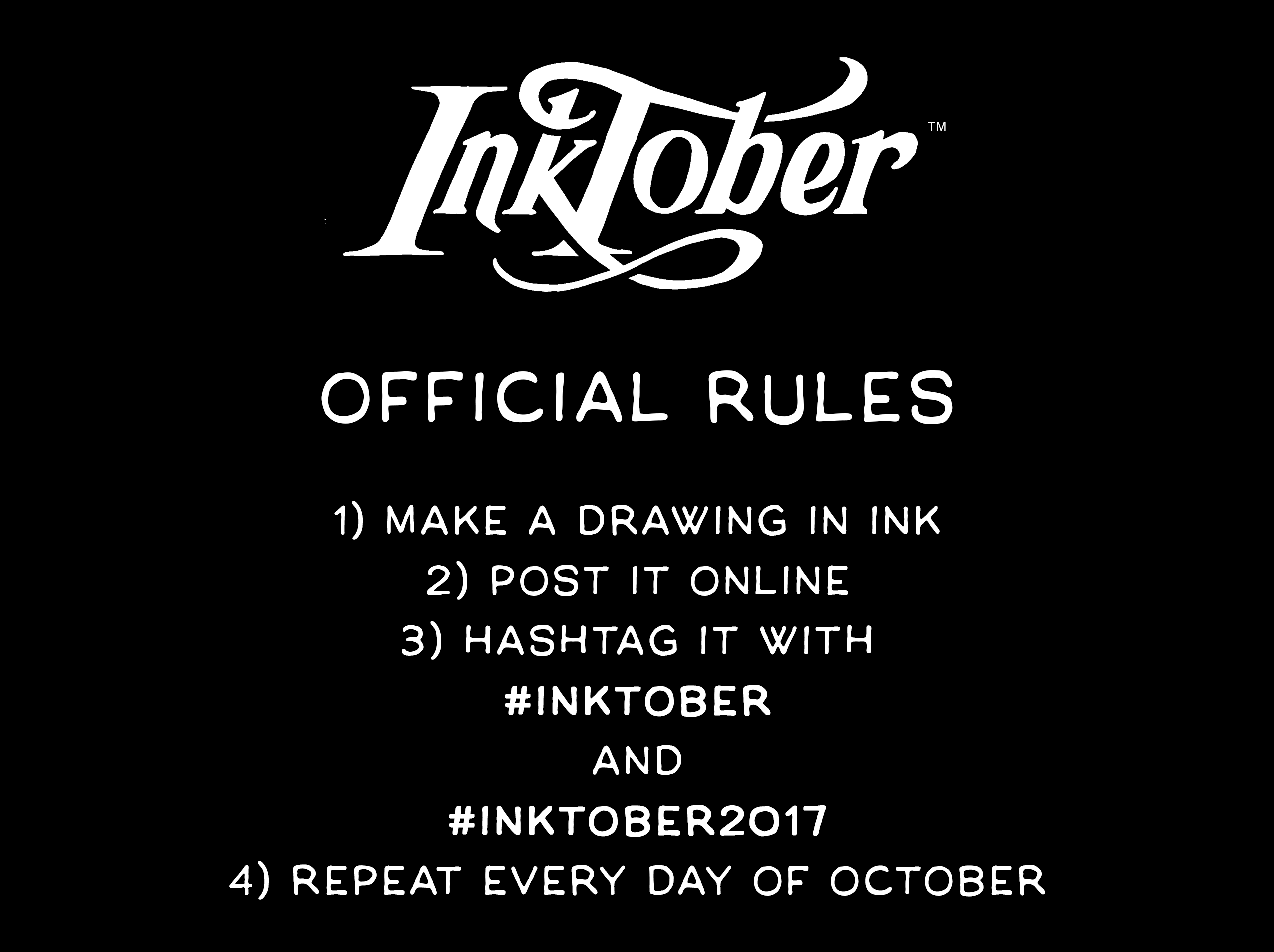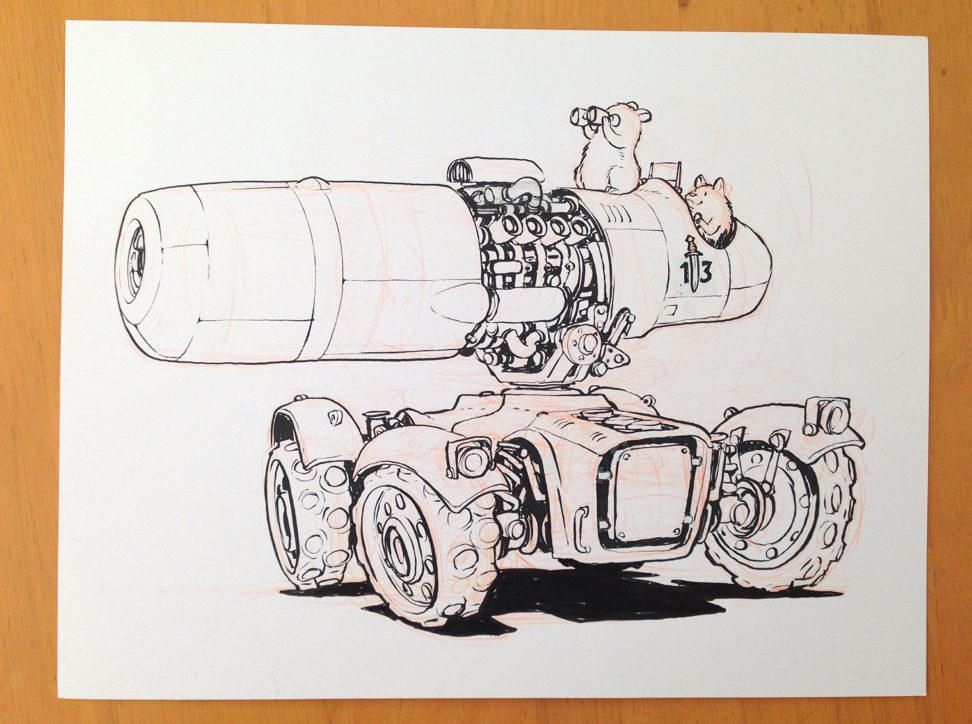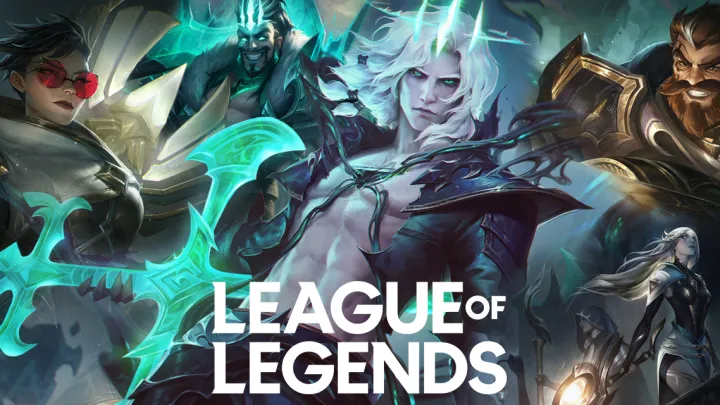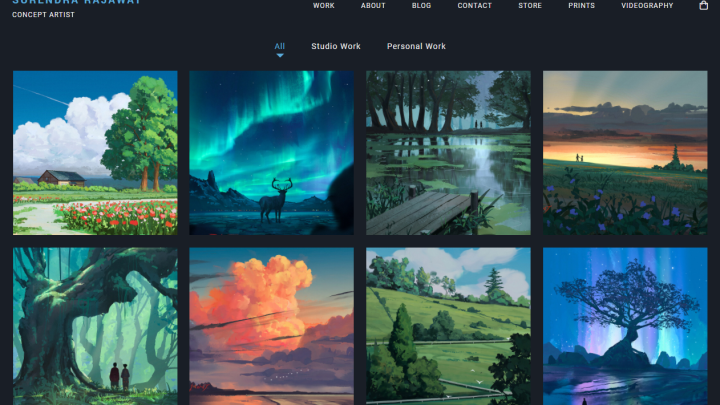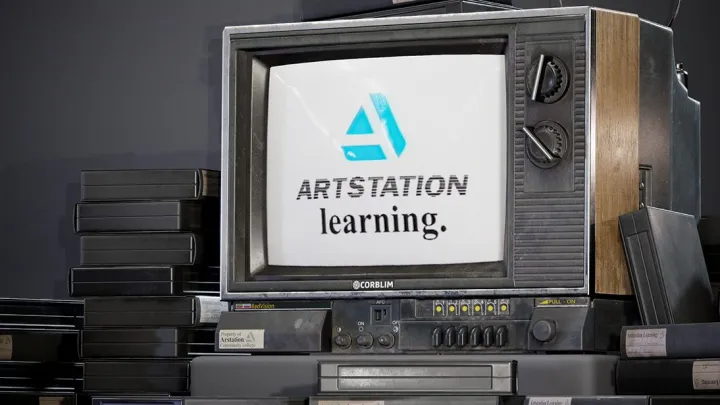We’re Bringing Inktober to ArtStation
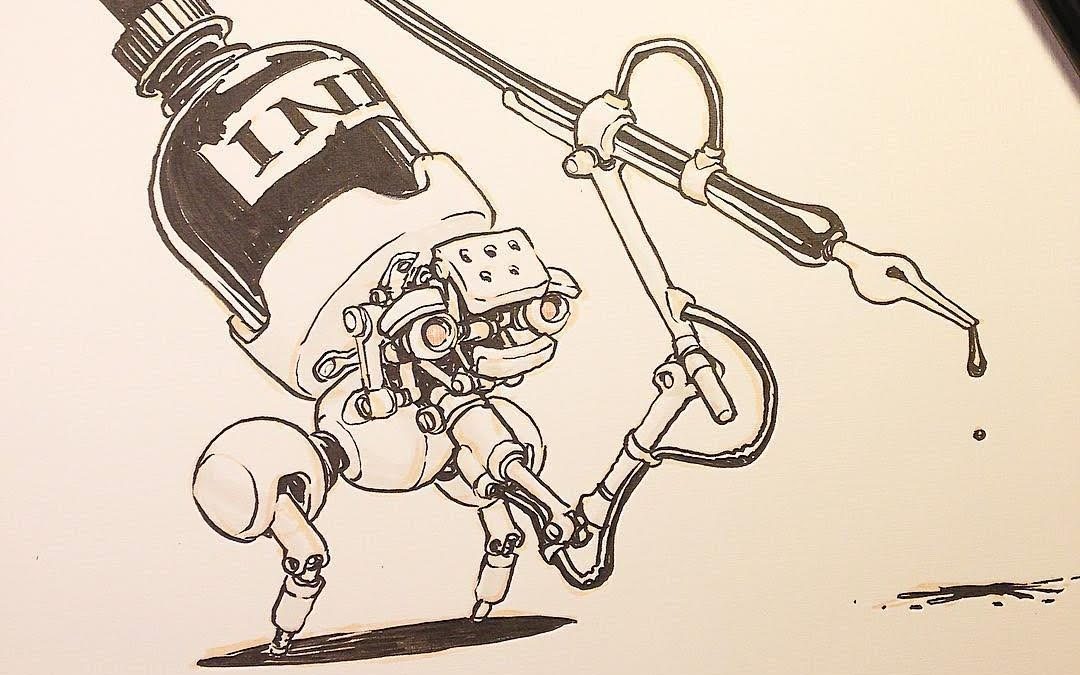
Inktober is a month long art challenge where artists create an ink drawing each day during October, creating thirty-one drawings in thirty-one days. We’d like to encourage you to get involved and share your work with the ArtStation Community! As part of Inktober on ArtStation, we’ll be doing a weekly feature on ArtStation Magazine to highlight some top editor picks. At the end, we’ll put together a final Top 10 feature, as liked by the ArtStation community.
To participate in the Inktober Challenge, simply upload your daily ink artwork on ArtStation and tag it with Inktober2017 for the month of October.
Founder Jake Parker created the challenge back in 2009 as a way to improve his own inking skills.
“Since then the challenge has grown to be a massive event with people participating all over the world. The last few years I’ve received countless emails, messages, and in-person comments from people telling me that Inktober got them drawing again. They tell me that for years they hadn’t really drawn, or drawn anything for themselves, but when they committed to Inktober it got them out of the slump, back into drawing, and more importantly, back to being creative again.”
For more information, read the in-depth brief below with creator Jake Parker on how Inktober works, how it helps you improve your skills and why you should get involved.
How & Why Inktober Works
Inktober works because of of the following three elements that are hard baked into it:
Constraints
When doing a challenge with a specific set of constraints you eliminate most of your options which allows you to focus on the creation of something. More options can lead to more opportunities to get frustrated and lose interest.
Inktober is about the constraint of medium. You must draw with ink. When you sit down to do the challenge you don’t have to decide what colors you’re going to use, whether you’ll be rendering in pencil or watercolor. The challenge has stripped away all of these variables that can get you sidetracked or frustrated, allowing your creative energy to be focused straight into your drawing.
Other constraints you can put on yourself are:
-
Subject matter. You can tell yourself you’re just going to draw a different landscape or monster design for the month.
-
Time. You can set a time limit like 15 minutes or an hour and see what you come up with in that time period.
-
Style. Perhaps you want to develop a new style. Instead of rendering your drawing with cross hatching you might stick to just drawing with swooping graceful linework.
-
Tools. My first Inktober was all about putting my technical pens away and learning how to effectively use a brush pen.
I sometimes find it ironic that creativity thrives under constraints. But the old saying holds true, give an artist too much rope and they’ll hang themselves.
Accountability
Once you start something with a specific end point (like 31 days) you have built-in motivation to get to that endpoint. You become accountable to yourself for that.
However, you also have built in empathy for all your excuses, so you need to announce to friends, people on art forums, or your online followers that you are doing this challenge. Knowing that you told someone that you are going to do something gives you that extra push of motivation.
There’s also a healthy Inktober community of artists to pull inspiration from and for you to help motivate and inspire others. Find a group of artists who are doing the challenge and join them, or form your own inktober group. You’ll feel accountable to these people and have more desire to finish the challenge.
Macro Goals and Micro Quotas
Big goals really work. Envisioning yourself obtaining the thing you want to accomplish gives your challenge more gravitational mass to suck you into it. But big goals can also be overwhelming and accomplishing them might feel impossible. Especially when our daily activities rarely produce dramatic results.
Doing a daily challenge introduces micro-quotas that help you to balance your big goal with what you’re doing day-to-day to accomplish it. Your micro quotas are the things you do each day to accomplish the big thing. Instead of getting overwhelmed by doing 31 drawings, you just tell yourself you need to ONE drawing that day. This makes your big goal approachable, and ultimately achievable. It trains you to accomplish big things by breaking them down into manageable bites.
There’s power in these three elements of Inktober and the benefits are twofold. One, you’re brain actually gets stronger, and two you form positive habits.
Mental growth
Your brain loves the kind of stimulation a drawing challenge offers. Creative problem solving has proven to be one of the best forms of mental growth. Sitting down each day to solve the problem a blank sheet of paper offers you fires up your neurons and forces you into higher modes of thinking. It forces you to think outside of the box.
Every year I do Inktober, after about 10 days I think, “Oh boy, I’m out of ideas.” It’s usually around this time that I start doing really off the wall stuff that sparks a new flavor of creativity in me and sets me off in a new, more exciting direction. The first 10 days is all my old tricks, the last 21 days are exciting and invigorating because I’m covering new ground.
Habit imprinting
The act of carving out 30-60 minutes EVERY day and physically doing something starts you on the path of forming a habit. Some studies say it takes 30 days of doing something to form a habit. Stopping for just one day sets you back and works against you.
Charles Duhigg’s book The Power of Habit introduced me to the “habit loop.” I’ll let him explain it:
First, there is a cue, a trigger that tells your brain to go into automatic mode and which habit to use. Then there is the routine, which can be physical or mental or emotional. Finally, there is a reward, which helps your brain figure out if this particular loop is worth remembering for the future. Over time, this loop… becomes more and more automatic. The cue and reward become intertwined until a powerful sense of anticipation and craving emerges.
When you create something there’s a handful of rewards your brain associates with it. There’s a sense of accomplishment that feels good. There’s the reaction from others to the thing you created. Perhaps there’s a relief that it’s over and you can check it off your list. Maybe your brain just likes the extra activity going on up there.
Inktober forces you to create something every day. By doing that you’re brain gets this little reward every day and soon starts to crave it. You give it a cue by reminding yourself it’s time to do the drawing, then you go through the routine of creating it, then you share it with others, or you just admire what you created and your brain gets the reward it craved.
Constraints. Accountability. Goals. These three things combined give you power to bust you out of a creative slump. It’s power that can elevate your ability to new levels. It’s power that can turn you into the prolific creator you want to be.
All of which could very well be life changing.
Note: you can go full marathon and do it daily, or go the half-marathon route and post every other day, or just do a 5K and post once a week. Whatever you decide, just be consistent with it. Inktober is about growing and improving and forming positive habits, so the more you’re consistent the better.
That’s it! Now go make something beautiful.
Jake Parker is a New York Times Bestselling Illustrator and an author of several graphic novels and books for kids. Parker created Inktober in 2009 to get better at inking. 8 years later it has become a worldwide phenomenon with millions of ink drawings created by thousands of artists since its inception. More information about Inktober can be found on Inktober.com
Jake’s home on the internet is www.mrjakeparker.com. He can also be found posting on Instagram under the handle @jakeparker and sharing more of his ideas about art on his YouTube channel: http://youtube.com/
